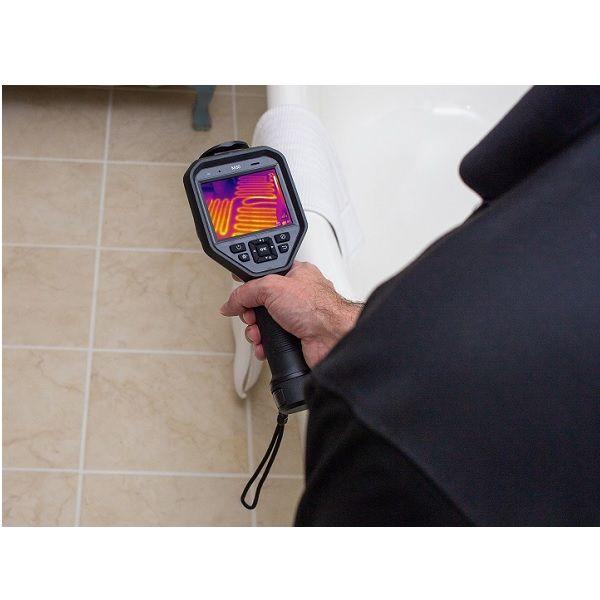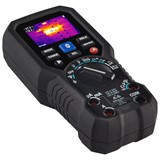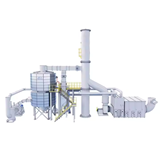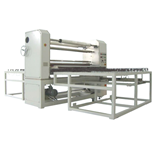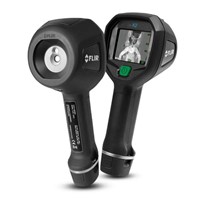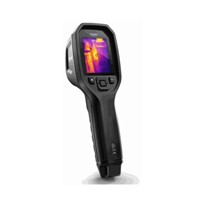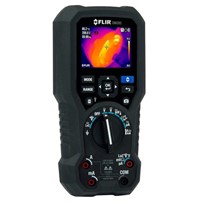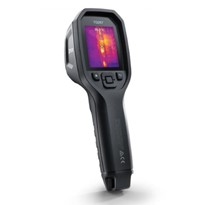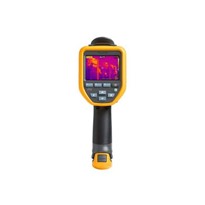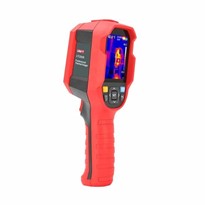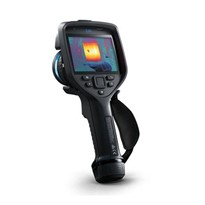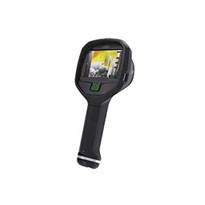Thermal cameras can troubleshoot and analyze working machinery, pinpoint heat loss in building construction and improve security systems by revealing the unseen through detection of infrared radiation. These cameras are a powerful way for contractors and other technicians to save time and money, and prevent accidents that could lead to loss of property and life.
What Is Thermal Imaging?
Thermal imaging equipment does not see through objects, like an X-ray camera, but rather detects varying levels of heat based on the infrared waves emitted by the objects. Professional thermal imaging cameras can see subtle differences in temperature to create a detailed image of hot and cold areas with accurate temperature measurements. Differences in temperature can be used to pinpoint potential problems in malfunctioning equipment and in systems that have been installed improperly.
What Industries Use Thermal Imaging for Maintenance?
The benefit is that thermal scans do not require equipment to be shut down to be inspected. The trained operator can quickly inspect and document faults and determine when repairs should be scheduled.
Safety is another reason that thermal cameras have become a regular tool for maintenance teams. Technicians do not have to be close to the machinery being tested as the photo can be taken from a distance, keeping techs safe while still acquiring the needed information.
Industrial Maintenance
Manufacturing companies often operate 24 hours a day, and taking equipment off-line to run any type of maintenance can cost businesses extremely valuable time. Reliability is enhanced when thermal imaging is part of an asset inspection and condition-based maintenance program (CBM). Downtime and maintenance expenses can both be reduced with a CBM program since maintenance only occurs when it's needed, rather than on a set schedule. Thermal imaging allows excessive heat in electrical, mechanical, and process equipment to be detected early in the failure curve. This minimizes the risk of a catastrophic failure, business interruption, and potentially dangerous conditions.
Utility Work
Electrical distribution systems support millions of users every day, and locating potential failures in the lines and in the metering is essential for providing constant service to customers. Transformers, circuit breakers, switches and bushings are common points in the system that will heat up before failure. Thermal cameras can detect the hotspots, measure the temperature, and allow reliability engineers to schedule repairs.
Home Inspections
Home inspectors must find problems that are seen and unseen. One of the major concerns in a home inspection is finding water leaks that have not revealed themselves. Determining if there is excessive moisture and finding the source of a leak through the normal inspection process may prove impossible. Wet building materials will tend to be colder than dry materials and a thermal camera can alert an inspector where there may be problems. Wet insulation, framing, and drywall can be revealed, allowing potential home buyers to make an informed decision and a good investment.
Home Building
Thermal imaging is also used for air leaks (air tightness), Indoor Air quality, humidity and thermal bridging. Using a thermal camera during the build will ensure quality, reduce rework and costly callbacks.
Plumbing
It is also common for plumbers to use thermal cameras to diagnose problems with floor heating systems. A thermal camera can mean the difference between removing one tile to fix the problem and tearing out an expensive tile floor
Thermal Imaging Equipment as Handheld Tools for Preventive Maintenance
The best maintenance practices require the ability to assess problems within minutes. Broken machinery, out-of-service electrical grids and homes that leak energy are issues that do not have to be a surprise. While early thermal cameras were bulky, complex and expensive, today's cameras are compact, rugged, affordable and can fit on a contractor's tool belt. But just because a thermal camera is portable doesn't mean the data it provides is limited. Professional equipment provides excellent image clarity, the ability to shoot stills and video with a high frame rate, multiple lens options and affordability.
Regardless of the industry you are involved in, thermal imaging should be an integral part of your company’s success plan.
HIKMICRO is a leading provider of thermal imaging equipment and solutions. We offer thermal cameras and software applications for maintenance teams, security providers and utility and construction companies. Our equipment is high-quality, user-friendly, backed by a solid support team of industry professionals and developed with the latest technology available to the industry. Contact us today.


